Silver Salmon Creek Lodge, Lake Clark National Park, Alaska: A photography trip report.
In July of 2009, I traveled to Alaska for an unforgettable photography excursion. Wildlife photography has been a branch of the art that always kept itself just past arm’s-reach. It is designated to those photographers who have time, patience, money, and the ability to venture into areas where truly elusive wild animals can be seen. After an excellent trip to Yellowstone National Park in 2008, I was left with the urge to capture more true wildlife photos. Grizzly Bears were one of the few indigenous species of wildlife in Yellowstone that I never got a glimpse of during my short 1-week stay, and although the trip was a huge success in many ways, I became increasingly jealous of some of my friends on Naturescapes.net and their amazing Brown Bear photos… A trip was in order.
I researched the possibilities thoroughly, and with the help of other NSN members, including Bill Lockhart, I finally made the decision to book a trip to Silver Salmon Creek Lodge in Lake Clark National Park, Alaska. Phil Colla had published a detailed travel report from the lodge, as had Bill Lockhart. One of the other options when hunting for Bear photos in Alaska was to visit the Brook’s camp in Katmai, but the thoughts of standing on a cramped viewing platform next to hordes of other photographers to get shots of Bears Salmon fishing didn’t sound as appealing as what SSCL had to offer. I had heard the reports of standing within 20 feet of the Bears, watching them interact in their natural habitat with no outside humanly distractions. This seemed like the place for me.
So I booked it. 5 months in advance. I only had a short window of time to actually take the trip, and because bookings can fill up rapidly, the advanced time was necessary. This isn’t exactly a bargain photography trip and is the most expensive one I’ve taken to date, but you get what you pay for. Really, you do. I had originally justified it as a once-in-a-lifetime trip but after one day in the field, I knew I would have to find a way to return again…
The owner of SSCL, David Coray was extremely helpful in assisting me with the booking and planning process. In the end I decided on flying into Kenai, AK via Anchorage and spending a night at one of David’s rental properties in the area. In the morning, his assistant drove me to the Soldotna Airport and I took a bush plane across the Kenai Peninsula, directly to Lake Clark National Park. There are only two ways to get to the area; by boat or by air and since there is no airport, only small craft like bush planes and float planes can land. This makes for a truly remote location that is still untouched by development. (Let’s hope it stays that way.) Bill Lockhart had told me about the flight and it definitely lived up to expectations… Truly unforgettable. We landed directly on the beach, just a few hundred yards from the lodge property where I was greeted by Jenny, my assigned Bear Guide.
The guides a SSCL are top-notch and have a true respect and understanding of the wildlife in the National Park. They also understand a great deal about photography and will always help position you in the best area for good lighting. These guides often do not carry guns and one of the main reasons for this place being bear-friendly is because of the relationship the owners and guides of SSCL have with them. The bears are left alone for the most part and treated with the utmost respect in terms of territory and comfortable viewing distance. Trash and food scraps are not left out, so the bears are not enticed into scavenging on lodge property. Large numbers of non-educated people never find their way onto this part of Lake Clark National Park, because SSCL (and their neighbors – Alaska Homestead Lodge) keep the reservation numbers to a minimum and deter the “zoo” atmosphere by educating the few visitors they do have and only hire guides who keep the bear’s safety in mind just as strongly as their clients. The land being on a National Park mean no hunting is allowed, and bears are only approached by the guides in wide open areas, such as grass fields they graze in, as well as shorelines and river outlets.
The lodge area is located just a few hundred yards from the shore, so after tossing my luggage in my cabin and getting a quick briefing on the lodge and bear-viewing etiquette, I was out in the field with Jenny in under 20 minutes and standing within 50 feet of a mother bear and her three first-year cubs. She nursed her cubs right in front of us, and afterward, two of the cubs engaged in a friendly wrestling match…
I had to take a minute, stop looking through the viewfinder, and just absorb the scene… This place really is as magical as the people who went there before me had professed. Jenny went out of her way at every location to position us where the light was optimal for photography and guiding me to approach slowly to get those great close-up shots, at the same time always giving the wildlife their space.
Throughout that first day, the light was (for the most part) excellent. We were able to catch shots three different Bear groups in three different areas before heading back to the lodge for dinner. (we skipped lunch that day and stayed in the field shooting.) I was fortunate enough to have Jenny all to myself during most of my stay and she was great company and extremely accommodating. We would see the other guests (a photo workshop group run by David Cardinal and guided by Drew – SSCL’s best guide) from time to time in the field, but there was so much room and so many photo opportunities for different bears throughout the area, that we never found ourselves crossing wires.
Transportation from the lodge to the bears (depending on where they are at the time) is either by ATV or on foot. The majority of the time, I would ride in a trailer with my gear, towed by Jenny’s ATV and she would scout out photo ops as she drove. The staff at SSCL stays on radio with each other at all times which helps avoid the possibility of driving into an area where other photographers may be quietly and cautiously working on shooting…
My favorite shots from the first day came from an adult sow who was taking her time, looking for fish that were stranded between a sand-bar and the shore during low tide…
The bears in the Lake Clark National Park area are Coastal Brown Bears. One of the reasons why they are larger than their Grizzly counterparts is because of their easy access to large quantities of salmon who come in from the ocean inlet to spawn in the freshwater in the peninsula’s rivers. Most of the early spring and summer however, they spend a great deal of their time grazing on sedge grass in the meadows just in from the coastline.
On day two we lost the good light, but an amazing adventure that day definitely changed things for the better. As luck would have it, I happened to be the only solo visitor to the lodge at that particular time… The other 6 photographers there were part of a workshop being conducted by David Cardinal. Part of their itinerary included a 90-minute boat ride to Chisik Island and Duck Island, located in the Tuxedni National Wildlife Refuge area. Since there was extra room and only one of me, I was graciously invited to come along on this journey, which ended up being unforgettable.
As we left the coast on David’s boat, we crossed over a strongly-defined line of change in water color. This is from the volcanic ash deposits that flow freely from Mt. Redoubt and is cast out directly into the saltwater peninsula… After about 30 mins of rough, choppy waves that bounced us all over, the water calmed and we headed toward the cliffs of Chisik island, where thousands of Kittiwakes nest. As we floated closer, there was a cacophony of fleeing bird calls that became almost deafening.
After a few moments, I realized that there was a large Bald Eagle soaring close by the nests and as soon as I put my telephoto lens on, he began to attack. Some of the Kittiwakes attempted to attack the Eagle, while others flew for their lives in a scattered, unorganized panic. Unfortunately, 300mm was not a long enough reach to capture the action of this Eagle’s failed attempts at hunting on this afternoon, but luckily I was able to at least obtain some documentation to help me remember this amazing moment.
Traveling on to Duck Island, just north of Chisik, we dropped anchor and spent a few hours photographing Horned Puffins. These birds have been one of my favorite species since I was a young child, so getting the opportunity to photograph them was worth the trip to Alaska alone.
The third and fourth days were mostly a wash-out, but my guide Jenny and I still went out in the rain and did our best to photograph the Bears within a few square miles of the lodge. I also took the opportunity to spend some time socializing with the group taking David Cardinal’s workshop (who happened to be all wonderful and intelligent people) and eating the amazing food that they prepared for us… I was incredibly lucky to have Dorian (David Coray’s daughter) there in addition to the resident chefs. Dorian was incredibly knowledgeable about the Vegan diet and went out of her way to make me the most amazing vegan dishes and deserts. I am not kidding, it was like Thanksgiving Dinner for breakfast, lunch and dinner – every day. I have never eaten that much good food in my life.
On my last day, I was scheduled to leave around 1pm, so Jenny and I headed out at dawn to photograph the bears digging for clams at low tide… Experiencing low tide is rather surreal, considering there is all of the sudden, a huge expanse (up to a mile) of barren shoreline (almost like a wet desert plain) where just a day before, there was deep ocean water and breaking waves…
As luck would have it, nature gave us a gift and the Mother of the three first-year cubs took them out onto the low-tide flats for what looked like possibly the first time. I was able to capture two photos that both ended up being contest-winners eventually. One is of the three bear cubs hesitating curiously as their mother ventured out into the shore. The other is of the same mother sharing a brief intimate moment with one of the cubs…
All in all, it was a hugely successful trip. Not only from the photographic point of view, but also from the ‘life-experience’ perspective. I try not to over-indulge in life, but I think I’d be cheating myself if I didn’t go back again soon…
I am already thinking about summer 2011!
thanks for reading
-Mac
The End.
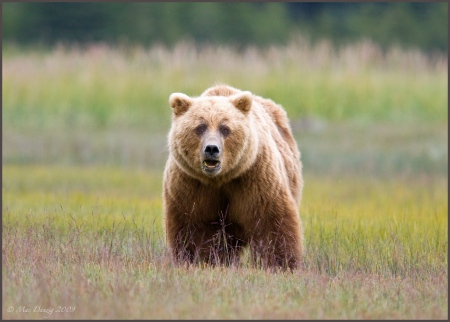
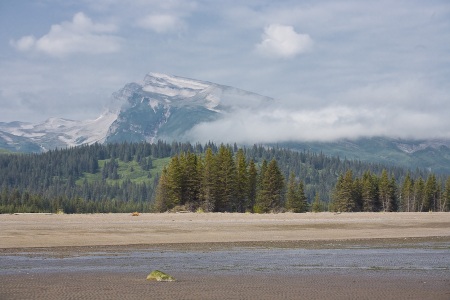

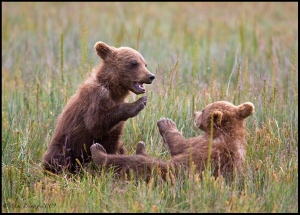
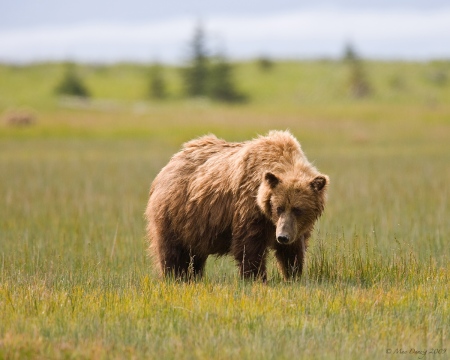
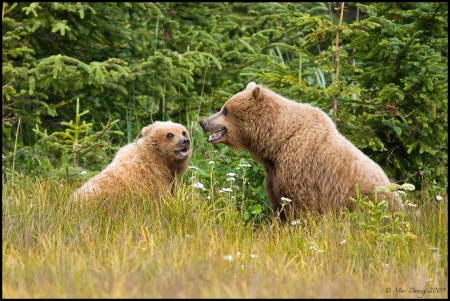
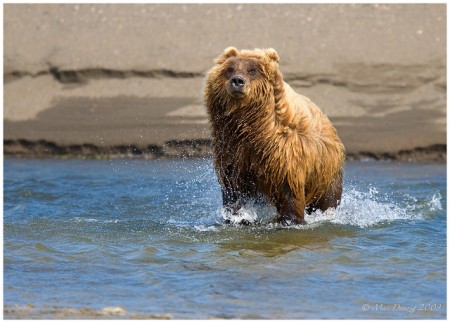
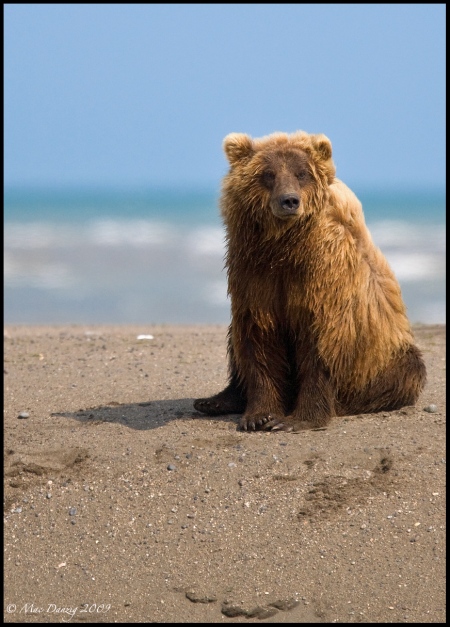
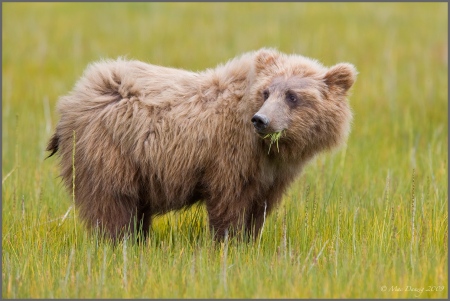
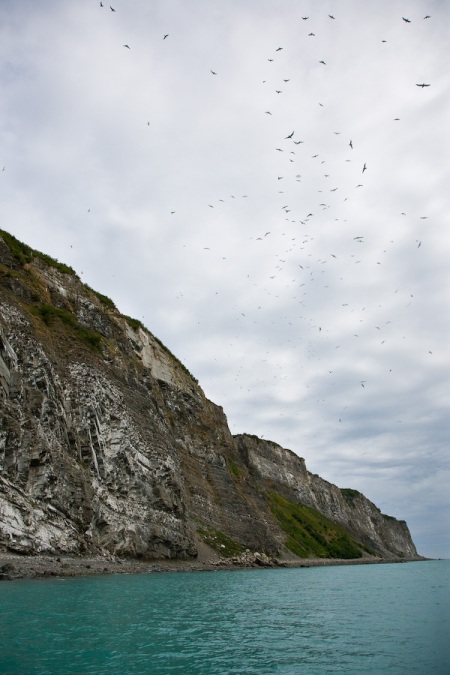
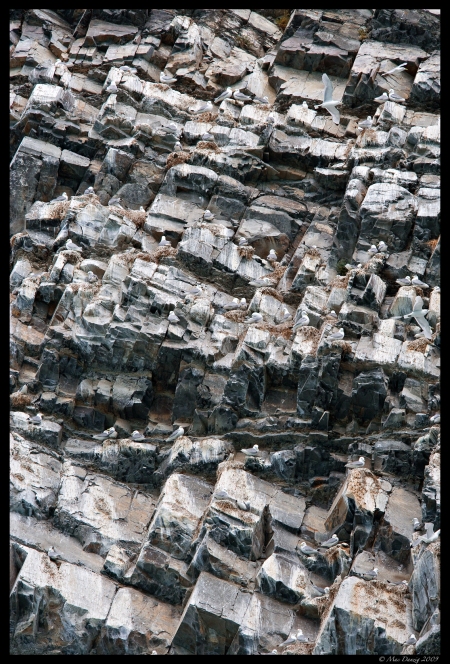
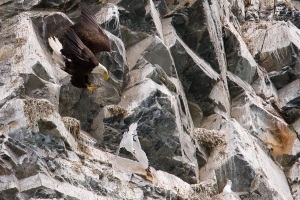
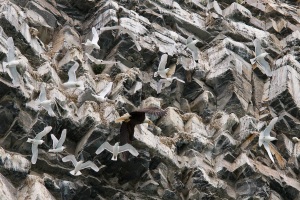
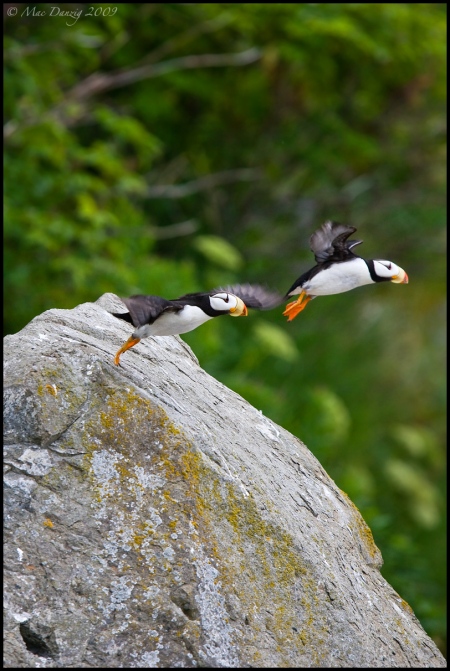
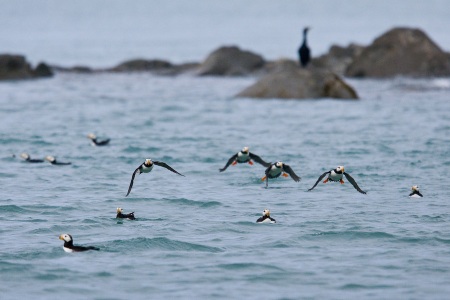
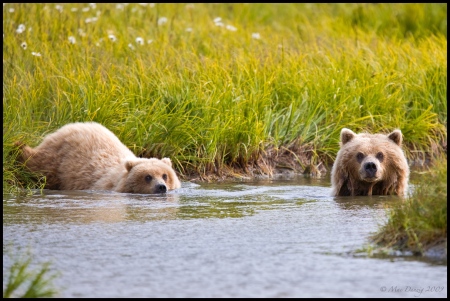
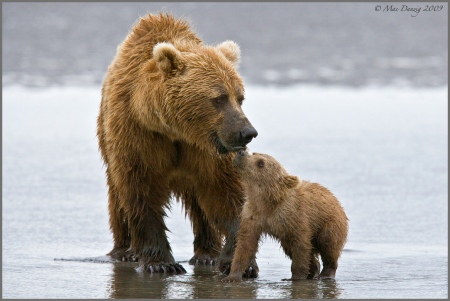
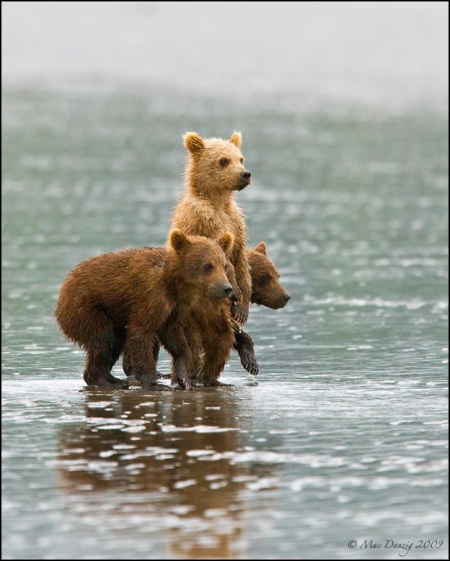
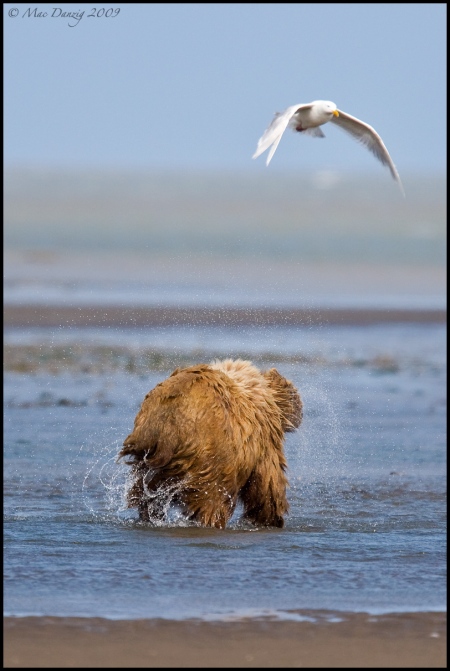
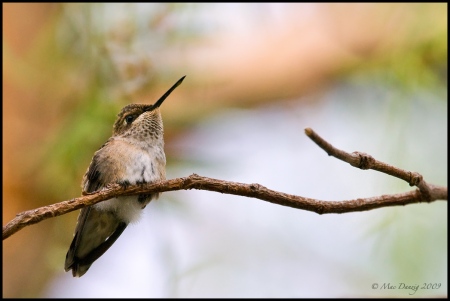
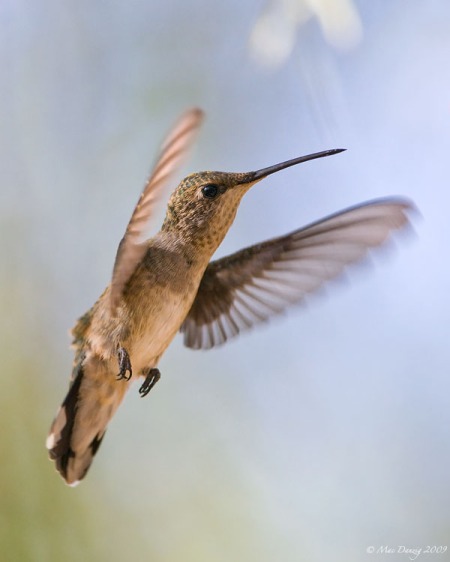
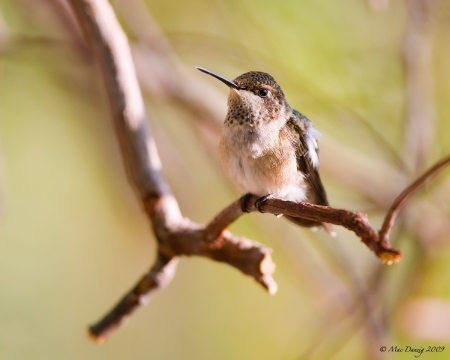
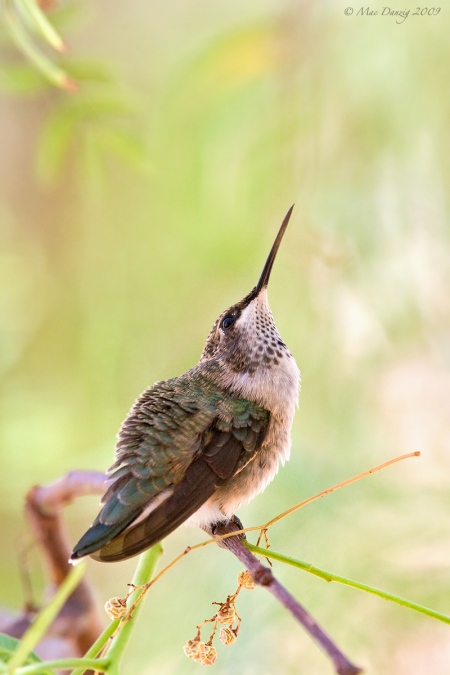
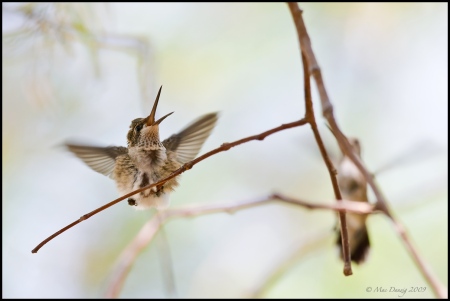

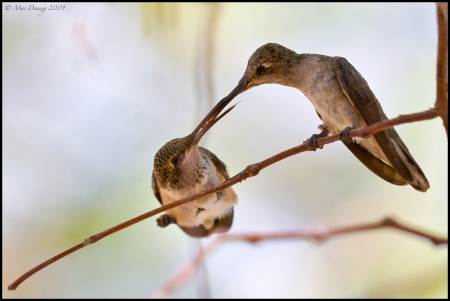
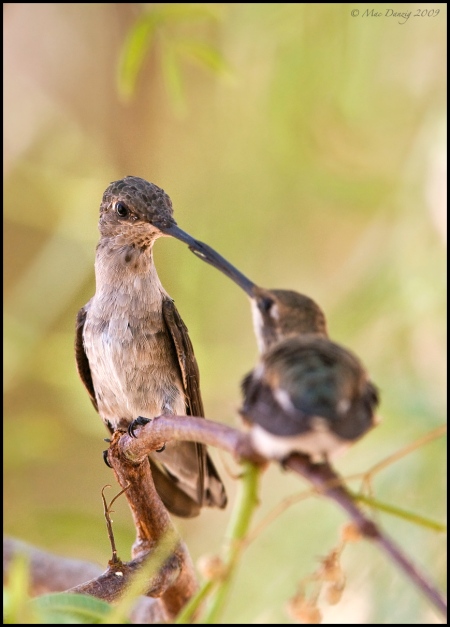
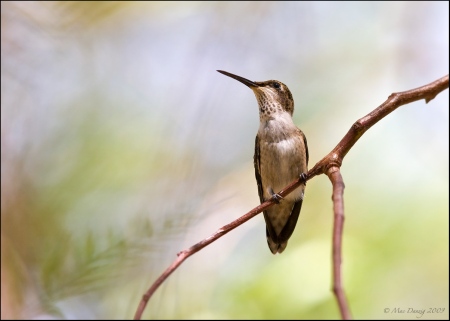
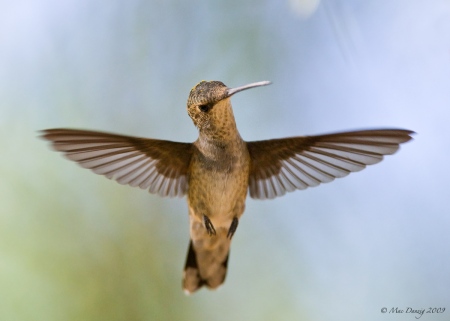


You must be logged in to post a comment.